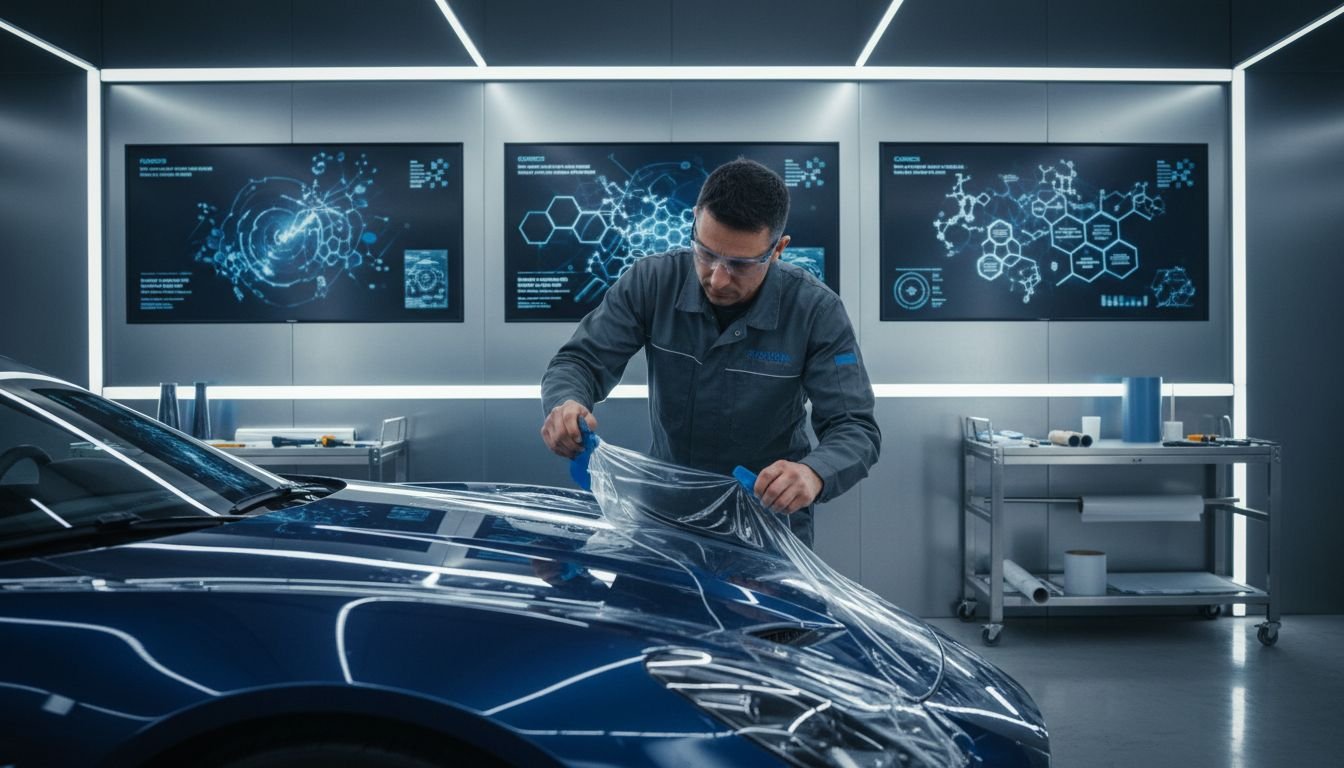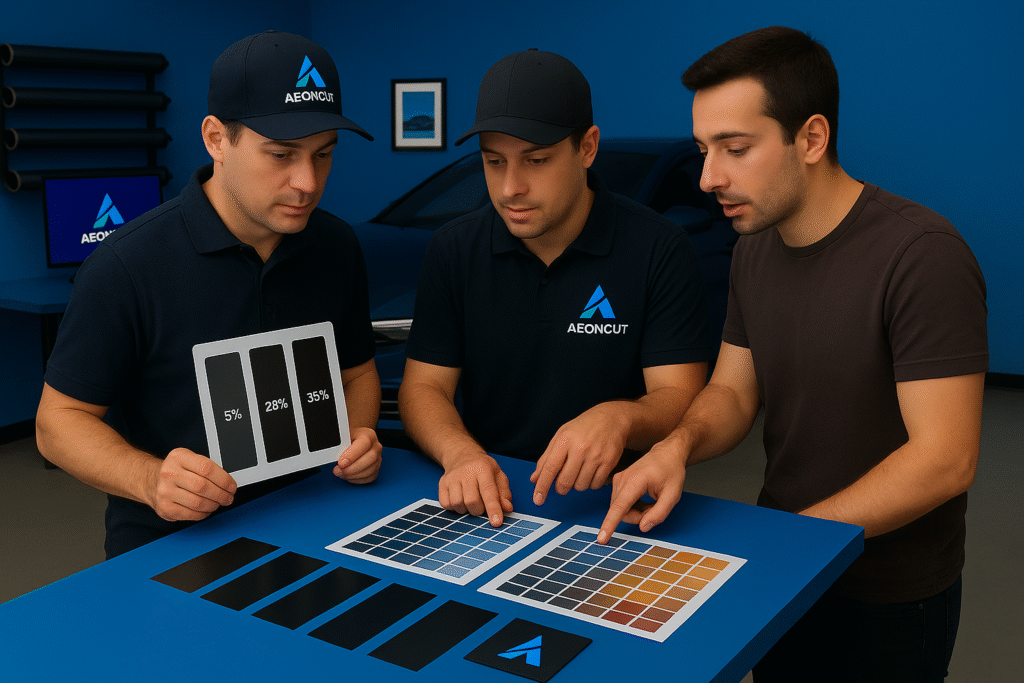

Window tint might seem like a simple cosmetic detail but industry experts know that colour choice goes much deeper than appearance. Neutral tones like charcoal grey, silver, and bronze now make up over 70 percent of professional installations worldwide, delivering surprising advantages far beyond just style. Yet with new technologies such as electrochromic films entering the market, the boldest opportunities for 2025 are not about the colours you see but about what those colours can actually do.
Table of Contents
- Popular Window Tint Colour Options Explained
- Benefits and Drawbacks of Each Tint Colour
- Regulations and Industry Trends for 2025
- Choosing the Best Tint Colours for Your Clients
Quick Summary
| Takeaway | Explanation |
|---|---|
| Neutral colours dominate for versatile performance | Charcoal grey, silver, and bronze provide effective solar heat reduction while maintaining visual clarity for clients. |
| Client consultation is essential for tint selection | Evaluate client-specific needs such as functional requirements, aesthetic preferences, and local environmental factors for optimal choices. |
| Emerging technologies expand tint options | Innovations like electrochromic films and smart tinting solutions enhance performance, offering dynamic light and thermal control. |
| Stay informed on regulatory trends | Regulations regarding window tinting are becoming more stringent across various jurisdictions, impacting installation practices. |
| Balance aesthetic and technical performance | Successful professionals combine visual appeal with technical capabilities to meet both client desires and industry standards. |
Popular Window Tint Colour Options Explained
Professional window tint installers understand that colour selection goes far beyond aesthetic preferences. Window tint colours represent a strategic choice impacting vehicle performance, thermal regulation, and visual appeal. The right colour option can transform a vehicle’s appearance while delivering critical functional benefits for clients.
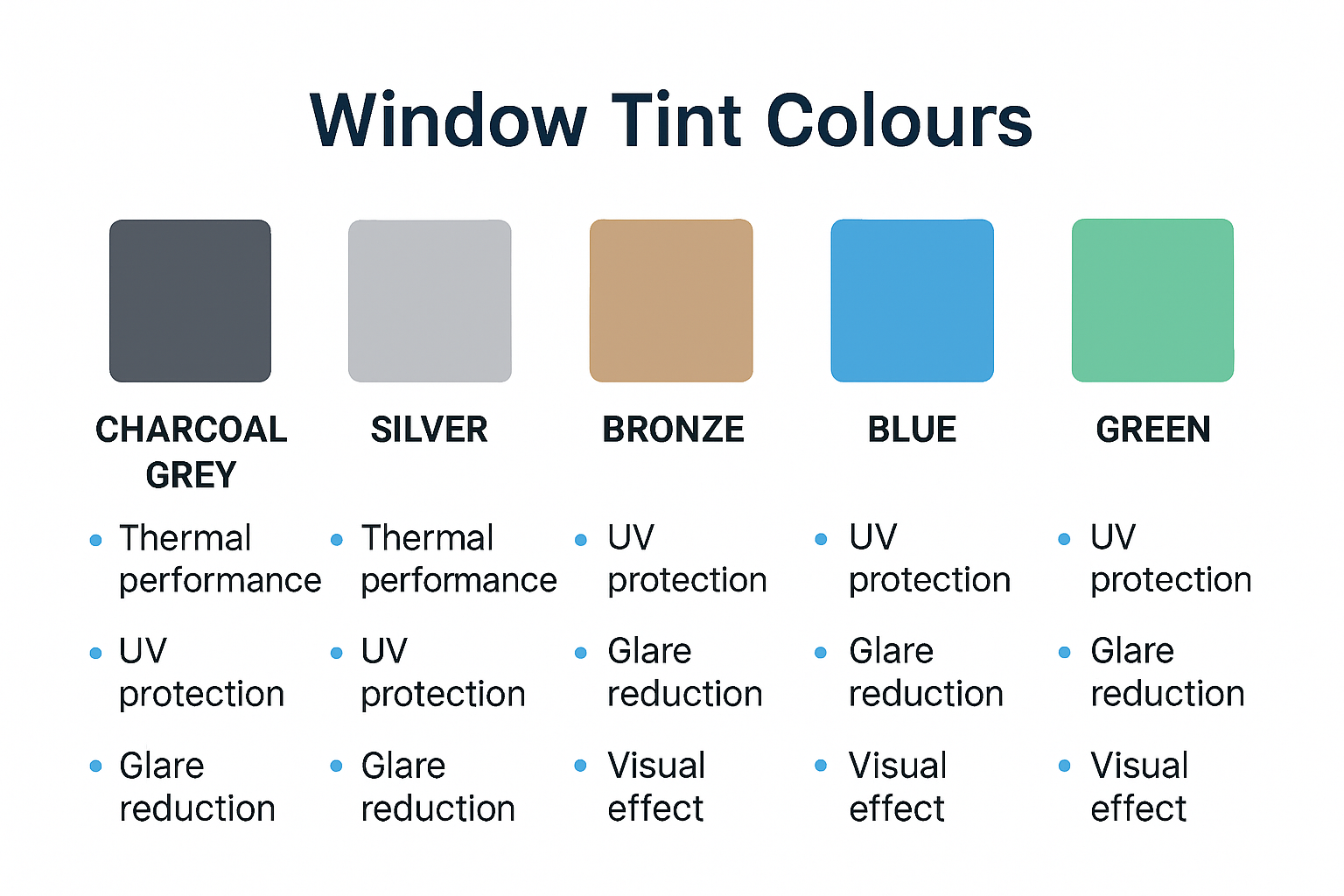
Neutral and Performance-Driven Colour Spectrum
In the professional window tinting industry, neutral colours dominate the market due to their versatile performance characteristics. According to the U.S. Department of Energy, neutral tones like charcoal grey, silver, and bronze provide exceptional solar heat reduction without compromising visibility.
Charcoal grey remains the most popular window tint colour among professionals. Its universal appeal stems from multiple advantages:
- Temperature Control: Effectively blocks infrared radiation
- Aesthetic Neutrality: Complements virtually any vehicle colour
- Glare Reduction: Minimises eye strain during driving
Silver and bronze tints offer similar performance metrics, providing installers with strategic options for different client requirements. These colours not only enhance vehicle appearance but also deliver measurable thermal management benefits.
Advanced Colour Performance Considerations
Modern window tint technologies have expanded colour options beyond traditional neutrals. Professional installers now consider multiple factors when recommending window tint colours:
- Solar Absorption Rates: Different colours absorb solar energy at varying intensities
- UV Protection: Darker colours typically provide superior ultraviolet blocking
- Heat Rejection: Lighter neutral tones can offer comparable heat management to darker alternatives
Industry professionals recognise that colour selection involves balancing aesthetic preferences with technical performance. Clients increasingly demand window tint solutions that deliver both visual sophistication and functional excellence.
The emergence of advanced multilayer tinting technologies has further expanded colour possibilities. Manufacturers now produce window tints with complex colour gradients and performance characteristics that were previously impossible. This evolution allows installers to offer more nuanced recommendations tailored to specific client needs.
While traditional colours like charcoal, silver, and bronze remain dominant, emerging trends suggest growing interest in subtle blue and green tinting options. These colours provide unique visual character while maintaining professional performance standards.
Professional window tint installers must stay informed about colour technologies, understanding that each option represents a precise engineering solution rather than merely a visual choice. Continuous education and technical knowledge remain critical in navigating the evolving landscape of window tint colour options.
Benefits and Drawbacks of Each Tint Colour
Professional window tint installers must understand the nuanced characteristics of different tint colours to provide optimal solutions for clients. Each colour presents unique performance attributes that impact thermal regulation, visual comfort, and vehicle aesthetics.
Neutral Tones: Performance and Versatility
Neutral colours like charcoal grey, silver, and bronze represent the industry standard for window tinting. According to Wikipedia’s comprehensive window film overview, these colours offer balanced performance across multiple critical parameters.
Charcoal Grey:
- Advantages: Superior heat rejection, minimal signal interference
- Drawbacks: Can appear darker, potentially reducing interior visibility
- Best Suited: Professional vehicles, luxury automobiles
Silver Tints:
- Advantages: Reflects significant solar radiation, maintains cooler interior temperatures
- Drawbacks: Potential metallic film interference with electronic signals
- Best Suited: High-performance vehicles, tech-oriented clients
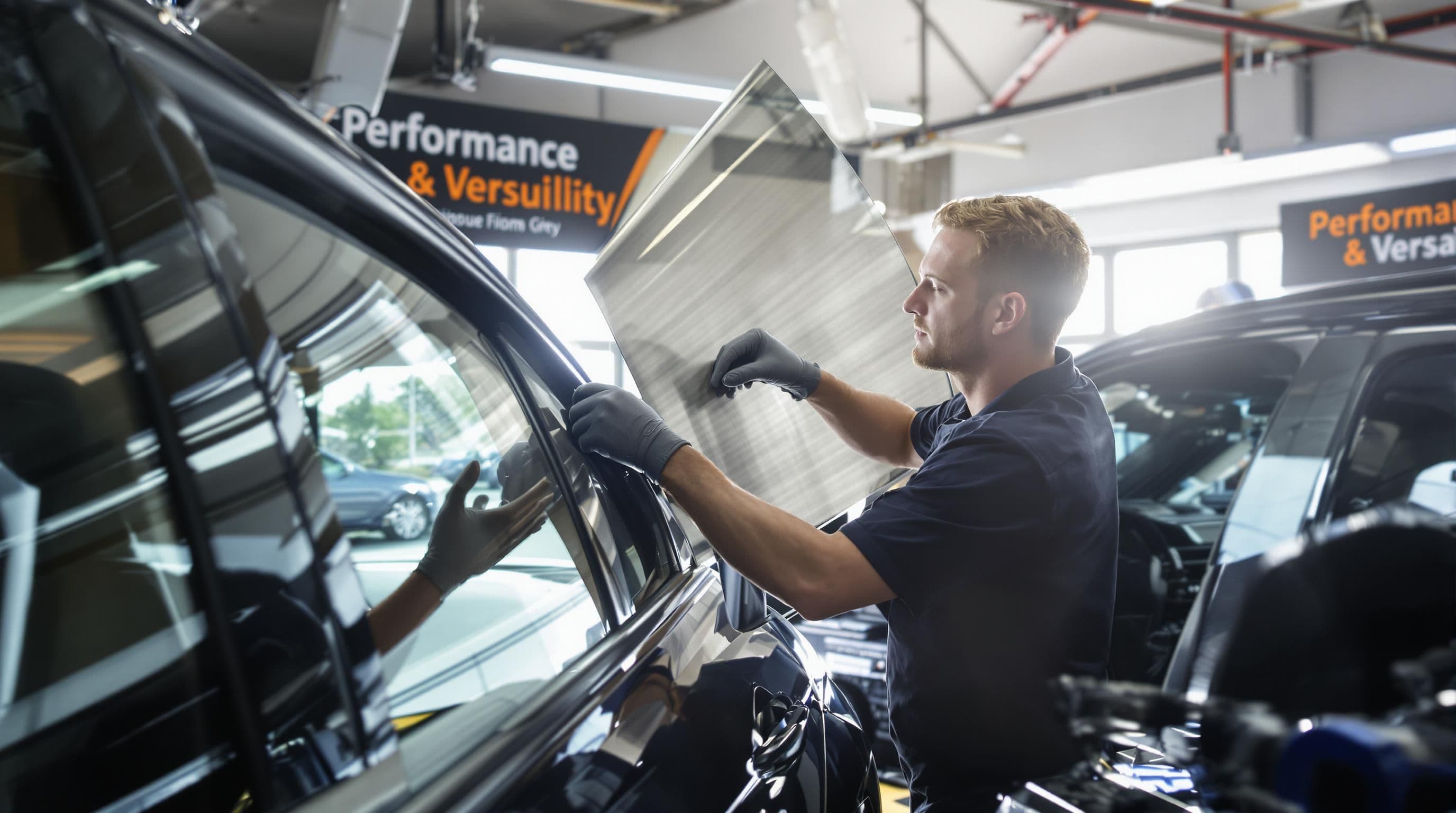
Specialized Colour Performance Insights
Recent research provides fascinating insights into colour performance. A study published in Safety Science examined how different tint colours impact driver visual acuity and glare response. Blue and green tints demonstrate interesting characteristics:
Blue Tints:
- Advantages: Unique aesthetic appeal, perceived coolness
- Drawbacks: Potential reduction in visual clarity during low-light conditions
- Recommended: Aesthetic-focused installations, moderate climate regions
Green Tints:
- Advantages: Natural light filtering, reduced eye strain
- Drawbacks: Limited heat rejection compared to darker tones
- Best Suited: Environments with abundant natural light
Another compelling research from the journal Buildings explored psychological responses to window tint colours. Their study revealed that bronze-tinted windows were perceived as more pleasant compared to other colour variations, highlighting the importance of colour selection beyond mere technical specifications.
Advanced Considerations for Professional Installers
Professional window tint installers must consider multiple factors when recommending colour options:
- Material composition impacts colour performance
- Client preferences vary across different industries and regions
- Emerging technologies continue to expand colour capabilities
Ceramic tints represent the pinnacle of window tinting technology. These advanced films offer superior heat rejection, remarkable colour stability, and minimal signal interference. While more expensive, they provide unparalleled performance for discerning clients seeking top-tier window tinting solutions.
Ultimately, successful window tint colour selection requires a holistic approach. Professionals must balance technical performance, aesthetic preferences, and client-specific requirements to deliver exceptional results. Continuous education and staying informed about emerging technologies remain critical in navigating the complex landscape of window tint colour options.
Below is a comparison table summarising the advantages, drawbacks, and ideal uses for the most common window tint colours mentioned above. This will help industry professionals make informed recommendations based on client priorities.
| Tint Colour | Advantages | Drawbacks | Best/Recommended Uses |
|---|---|---|---|
| Charcoal Grey | Superior heat rejection, minimal signal interference | Can appear darker, may reduce interior visibility | Professional, luxury automobiles |
| Silver | Reflects solar radiation, maintains cooler interiors | Possible electronic signal interference (metallic) | High-performance, tech-oriented vehicles |
| Bronze | Pleasant aesthetics, balanced appearance | Less discussed for performance than others | Clients valuing pleasant, stylish interiors |
| Blue | Unique aesthetics, perceived coolness | Reduced clarity in low light | Aesthetic-focused, moderate climate installs |
| Green | Natural light filtering, reduced eye strain | Limited heat rejection vs. darker tones | Abundant natural light environments |
| Ceramic (Tech) | Superior heat rejection, colour stability, minimal interference | Higher cost | Top-tier clients, demanding performance |
Regulations and Industry Trends for 2025
The window tinting industry in 2025 is experiencing significant transformations driven by technological advancements, environmental regulations, and evolving consumer preferences. Professional installers must stay informed about emerging regulatory frameworks and industry trends to maintain competitive advantage.
Regulatory Landscape and Compliance
Window tint regulations continue to evolve, with increasing emphasis on safety, energy efficiency, and environmental considerations. Different jurisdictions are implementing more stringent standards regarding visible light transmission (VLT) percentages and reflectivity levels for vehicle and architectural window tints.
Key regulatory trends include:
- Standardised Safety Protocols: More uniform national guidelines for window tint installations
- Enhanced Environmental Specifications: Stricter requirements for sustainable manufacturing processes
- Advanced Material Compliance: Regulations mandating reduced chemical emissions in tinting materials
Professional installers must remain vigilant about regional variations in window tint regulations. Some jurisdictions may have specific requirements related to:
- Vehicle window tint darkness limits
- Reflectivity thresholds
- Medical exemption provisions for specific tint percentages
Technological and Material Innovations
Emerging technologies are reshaping window tint capabilities. Smart tinting technologies that can dynamically adjust opacity are becoming more sophisticated. These advanced materials offer unprecedented control over light transmission and thermal regulation.
Innovative developments include:
- Electrochromic Films: Electronically controllable tint densities
- Nanotechnology-Enhanced Materials: Improved durability and performance characteristics
- Self-Cleaning and Self-Healing Tint Technologies: Reduced maintenance requirements
Manufacturers are investing heavily in research and development to create window tints that offer:
- Superior heat rejection
- Enhanced UV protection
- Improved optical clarity
- Minimal signal interference
Sustainability and Market Trends
The window tinting industry is experiencing a significant shift towards sustainability. Consumers and businesses are increasingly prioritising environmentally responsible solutions. This trend is driving manufacturers to develop:
- Recyclable tinting materials
- Production processes with reduced carbon footprints
- Energy-efficient window films
Market projections indicate growing demand for:
- Residential and commercial energy-efficient window solutions
- Automotive tints with advanced thermal management
- Architectural films supporting green building certifications
Professional installers must adapt to these evolving market dynamics. Continuous training, investment in cutting-edge technologies, and understanding regulatory frameworks will be critical for success in the 2025 window tinting landscape.
The integration of artificial intelligence and machine learning into tinting technologies presents exciting opportunities. Predictive software could potentially optimise tint selection based on specific environmental and client requirements, revolutionising how professionals approach window tint installations.
Ultimately, success in the 2025 window tinting market will depend on an installer’s ability to balance technical expertise, regulatory compliance, and responsiveness to emerging technological and environmental trends.
Choosing the Best Tint Colours for Your Clients
Professional window tint installers must develop a strategic approach to colour selection that balances technical performance, client preferences, and environmental considerations. Selecting the optimal tint colour requires a comprehensive understanding of multiple interrelated factors.
Client-Specific Consultation Strategies
Successful tint colour selection begins with a thorough client consultation process. Installers must evaluate specific client needs across multiple dimensions:
- Functional Requirements: Heat rejection, UV protection, privacy levels
- Aesthetic Preferences: Vehicle or architectural style, personal design sensibilities
- Environmental Context: Local climate, sunlight intensity, regional regulations
The Florida Solar Energy Center recommends focusing on Light-to-Solar Gain (LSG) ratios when selecting window films. Professionals should prioritize films with LSG values exceeding 1.0, ensuring optimal solar heat management while maintaining visual clarity.
Performance Evaluation Framework
Developing a systematic approach to tint colour selection involves comprehensive performance assessment. Key evaluation criteria include:
- Thermal Efficiency
- Visual Light Transmission (VLT)
- UV Radiation Blocking Capability
- Signal Interference Potential
- Long-Term Durability
According to the Whole Building Design Guide, professionals must consider performance characteristics defined by organizations like the American Architectural Manufacturers Association. These standards provide critical benchmarks for assessing window film quality and performance.
The following table organises the key factors professionals should assess during the tint selection consultation process. This checklist can help ensure all client needs and technical criteria are covered.
| Consultation Criteria | Description | Consideration Status |
|---|---|---|
| Functional Requirements | Heat rejection, UV protection, privacy | |
| Aesthetic Preferences | Style match with vehicle/building, design sensibilities | |
| Environmental Context | Climate, sunlight, local regulations | |
| Performance Metrics | Thermal efficiency, VLT, durability, interference | |
| Regulatory Compliance | Meets local/jurisdictional rules | |
| Technological Compatibility | Suits vehicle/electronics, adaptive features | |
| Budget Constraints | Aligns with client financial range |
Advanced Selection Methodology
Modern window tint professionals employ a multi-dimensional selection approach that transcends traditional aesthetic considerations. Critical factors include:
Technological Compatibility
- Electronic signal transmission performance
- Compatibility with modern vehicle systems
- Adaptive capabilities in varying light conditions
Environmental Considerations
- Sustainable manufacturing processes
- Recyclability of tinting materials
- Carbon footprint reduction potential
Client-Specific Customization
- Personal comfort preferences
- Specific usage scenarios
- Budget constraints
Professional installers must develop a nuanced understanding of how different tint colours interact with various vehicle types, architectural designs, and environmental conditions. This requires continuous education, technological awareness, and a client-centric consultation approach.
Emergent technologies are expanding colour selection possibilities, introducing smart tinting solutions that can dynamically adjust opacity and thermal characteristics. Professionals who stay ahead of these innovations will provide superior value to their clients.
Ultimately, successful tint colour selection is an art form that combines technical expertise, aesthetic sensitivity, and a deep understanding of client requirements. The most effective installers view each project as a unique opportunity to deliver personalised, high-performance window tinting solutions.
Frequently Asked Questions
What are the most popular window tint colours for professional installations?
Neutral colours, especially charcoal grey, silver, and bronze, dominate the market, making up over 70% of professional installations worldwide due to their versatile performance and aesthetic appeal.
How do different window tint colours affect thermal performance?
Different tint colours vary in their ability to absorb solar energy and provide heat rejection. Darker colours typically offer superior UV protection and heat management, while lighter neutrals can also be effective in reducing thermal load without compromising visibility.
What recent technologies are influencing window tint options in 2025?
Emerging technologies like electrochromic films and smart tinting solutions are shaping the future of window tinting, offering dynamic control over light and thermal properties, allowing for more tailored installations.
How can I choose the best window tint colour for my clients?
Selecting the best tint colour involves understanding your client’s functional needs, aesthetic preferences, and environmental context. A thorough consultation process that considers these factors is essential for optimal tint selection.
Take Your Window Tinting Precision to the Next Level
If you have spent time analysing colour options and weighing technical performance, you know that choosing the ideal window tint is only half the battle. As this guide has shown, accuracy, minimal waste, and flawless application are critical for delivering consistent results, especially when working with advanced materials and evolving technologies. Industry professionals need reliable tools that move as fast as trends and regulations change.
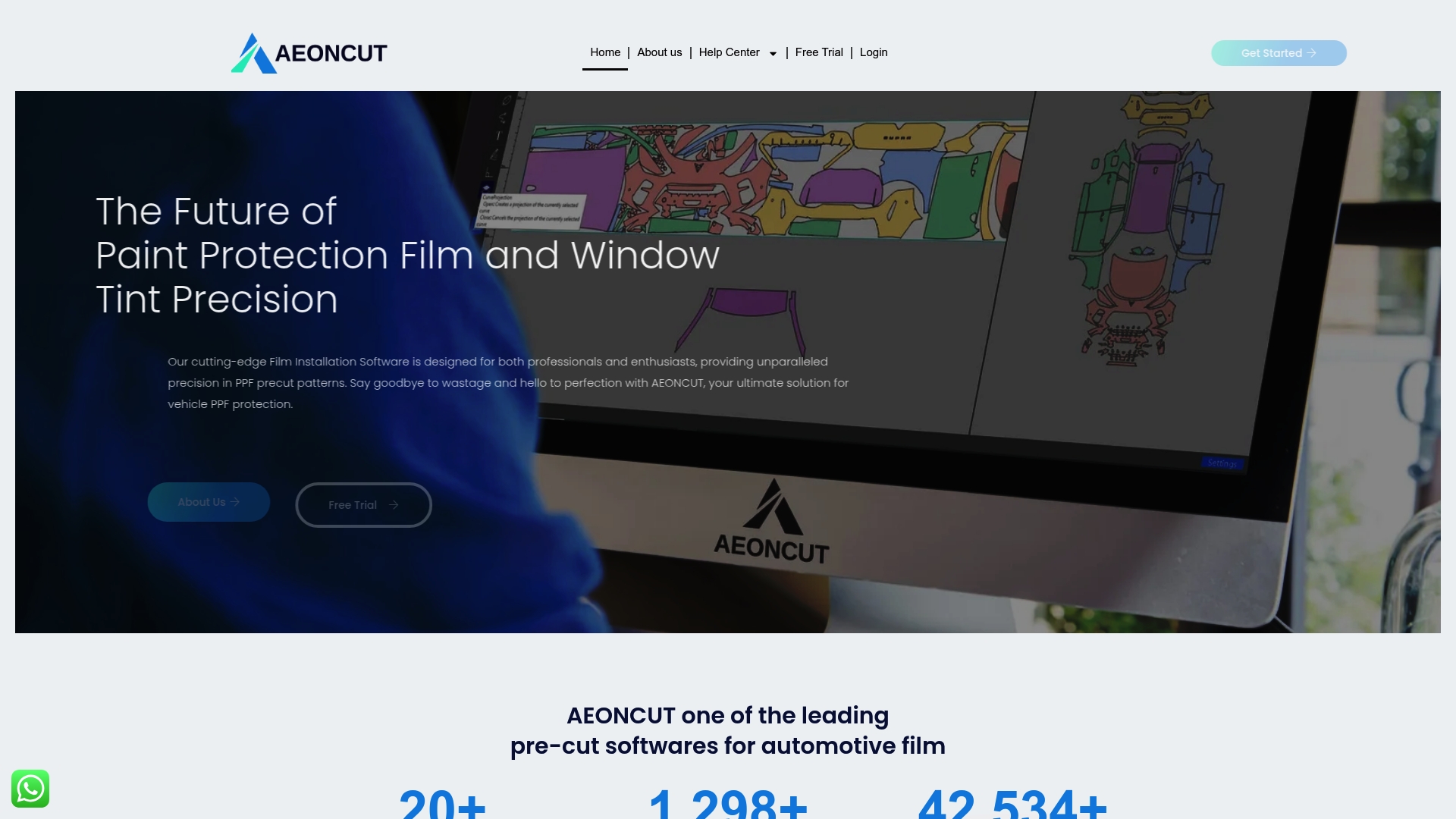
Transform your workflow and maximise every sheet of film with AEONCUT, the cutting-edge software trusted by top installers. Achieve perfect cuts for every vehicle, every time, using our extensive pattern library, AI-driven efficiency, and cloud-based updates. Do not let manual errors or outdated methods limit your productivity. Visit https://aeoncutsw.com now to see how our professional solutions can give you a competitive edge today.


